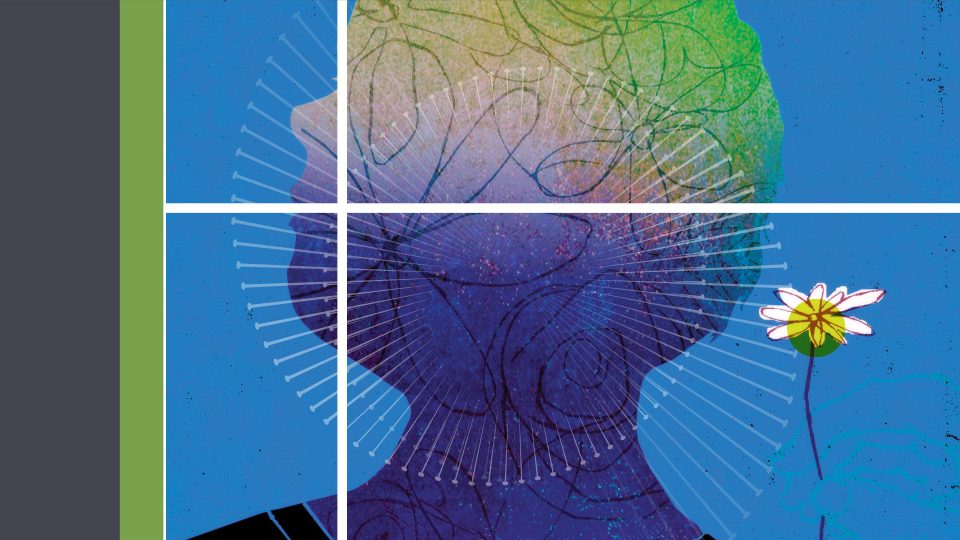
The future of autism spectrum disorders looks brighter, thanks to rapid advances in genomic sequencing technology and progress toward targeted, precision medicines.
An unwanted touch or hug. A change in routine. Sudden loud noises or crowds. Any of these can provoke real distress from a child on the autism spectrum. Yet there can also be gifts on the spectrum: a valuable ability to focus in on special interests, pattern recognition talent, musical ability.
Scientists who study the causes and potential treatments for autism hear from families that they need help with its negative aspects, but they want to retain its gifts. While current medications can help with autism’s negatives, they don’t treat autism’s root causes, and carry many side effects. Rapid advances in genomic sequencing are leading toward a time when treatments targeted to autism’s genetic causes may be possible.
Multiple laboratories at Scripps Research are trailblazers in the field. They seek to understand gene networks expressed in various cell types, and trace the biochemistry of brain development. They study neuronal signaling, and map the unusual brain circuitry underlying autism-associated behaviors. In the process, they work toward a day when autism therapies could be targeted not only to an individual’s genetic profile, but calibrated to their specific needs, down to specific cell types in specific brain regions.
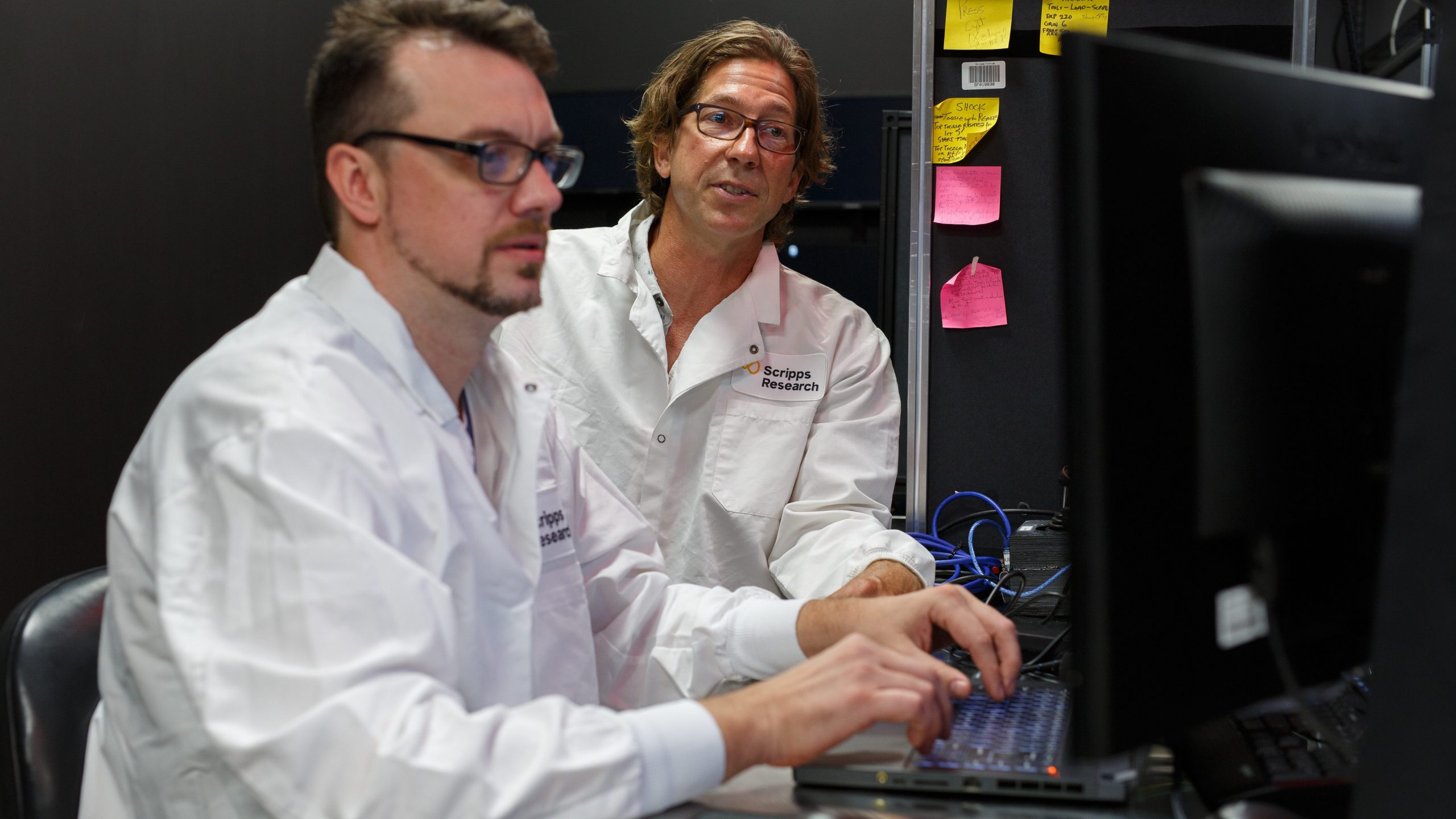
“Autism is a name given to a collection of behavioral abnormalities. Not all are driven by the same mechanisms,” notes Gavin Rumbaugh, PhD, a neuroscientist based in Jupiter, Florida. His lab recently added a suite of technologies that enable the mapping of brain circuitry, employing two-photon microscopy and high-density silicon probe recordings.
“If we want to understand autism, we have to understand how altered brain function causes behavioral abnormalities,” Rumbaugh says. That includes both the positive and the negative, he adds.
The circuitry of touch
Gifts that can accompany autistic traits have made careers. Bram Cohen, founder of the first data file-sharing protocol, BitTorrent, says his autism brought gifts of intense focus and concentration, key to his success with coding and creative problem-solving. Armani Williams’ fascination with racing on TV led him from a once-nonverbal child to become the celebrated NASCAR stock-car driver he is today. Talking Heads singer/songwriter David Byrne recounts using musical performance to transcend social awkwardness from Asperger’s syndrome.
However, a diagnosis of autism spectrum disorder typically is given because its more negative impacts take a toll on children and their families. Delayed developmental milestones, such as speech and coordination are typical. So, too, are social challenges caused by difficulties making sense of others’ emotions and facial expressions. Restrictive and repetitive behaviors, such as rocking and hand flapping, may appear during stress in some forms of autism. Sensory processing dysfunction exists in all forms of autism. It can lead to outbursts, tantrums, aggression, or escapist behaviors, like suddenly running away. Abnormal pain perception accompanies some genetic causes of autism, too, leaving parents sometimes unaware of serious injuries.
All fall under the broad umbrella of diagnostic criteria for autism spectrum disorders. It is a lifelong condition. In the United States, an estimated 4.4 million men have autism, while an estimated 1 million women do, according to the U.S. Centers for Disease Control and Prevention. In children, the prevalence of autism diagnoses has reached an astonishing 1 in 34 U.S. boys, and 1 in 54 U.S. girls by age 8, according to the National Institute of Mental Health.
For about 70 percent of people diagnosed, their condition has a genetic origin, sometimes due to a mutation to a single gene, sometimes a combination, Rumbaugh says. A landmark 2020 study found more than 100 different strongly associated risk genes.
Scripps Research scientists are exploring several. They include Rumbaugh’s focus, the SYNGAP1 gene. If one copy is dysfunctional, brain development goes awry, featuring both increases and decreases in connections within brain areas affecting touch-related sensory information, and abnormally delayed “neural plasticity,” or experience-driven changes in neuron connectivity. Intellectual disability and seizures are typical, as well.
While only about 1 percent of children with autism have a broken copy of SYNGAP1, all children diagnosed with autism spectrum disorders have sensory processing issues. That makes SYNGAP1 an excellent model for exploring sensory circuitry, including how sensory dysfunction causes troubling behaviors, and how it differs in people on the spectrum, he says.
It becomes possible to zero in on touch and touch disorder circuitry in mice, Rumbaugh says, providing insights about corresponding areas in human brains. The work has the potential to benefit all children with autism spectrum disorders, Rumbaugh explains.
“Once we know these behavioral circuits, the next question is, can we selectively correct the activity to bring the normal sensory behavior back? We do it in the lab,” Rumbaugh says.
Beyond that, he adds, is the question of whether factors in neurons within those special circuits could be used to medicate only that circuit?
“That’s a way off, but that’s the idea,” Rumbaugh says. “We need more selective drugs that regulate specific neural circuits. Technologies are being developed to make this possible.”
Thoughts on brains large and small
Neuroscientist Damon Page, PhD, focuses on the genes PTEN, and DYRK1A, and related genes. Those genes directly affect brain cell growth and density during embryonic development, Page has found. Mutated copies of the genes can produce macrocephaly or microcephaly – overgrowth or undergrowth of the brain, visible in larger- or smaller-than-normal head circumference.
Mutations to PTEN lead to the overgrowth of nerve fiber tracts that convey information between brain regions, Page’s group found. On the other hand, mutations to DYRK1A lead to disproportional undergrowth of brain tissue.
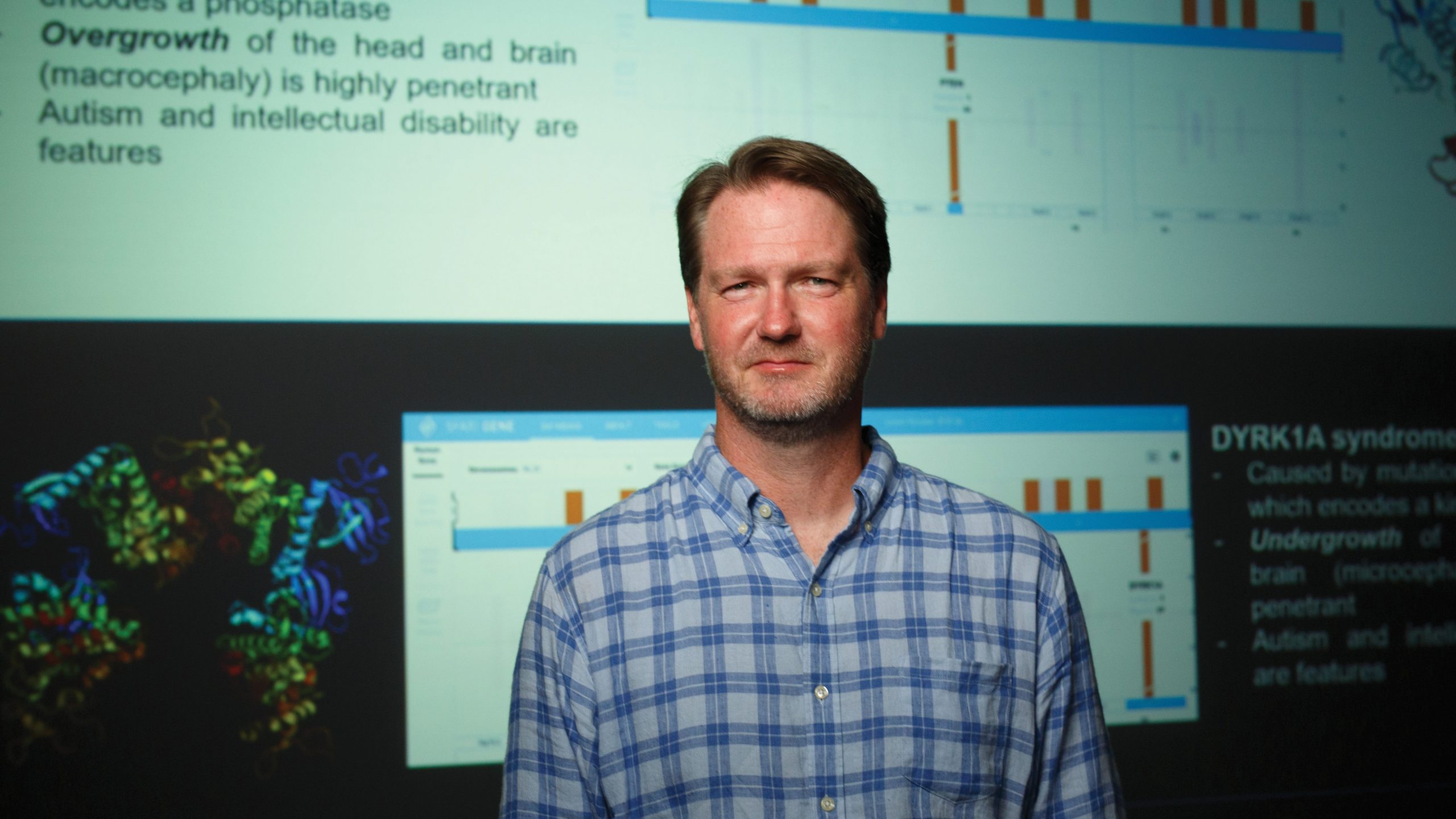
Page has found that in mice with these mutations, it’s possible to restore brain overgrowth or undergrowth during key development windows. This suggests that the right medications given at the right time may be able to rescue more normal brain function. The window appears to be much longer in the case of undergrowth, he says.
“PTEN mutations lead to brain overgrowth and neuronal overgrowth,” Page says. “If we block the pathway that promotes that growth early on, we can rescue normal development.”
But the mouse models are showing them there is a fairly narrow window for preventing PTEN-related overgrowth. “Once it happens it is very difficult to reverse,” he says.
In the case of DYRK1A-linked brain undergrowth, Page’s team found that an existing medication, one already FDA approved for use in children, could restore more normal brain physiology if administered during a development window that, in mice, corresponds to early childhood. The drug, IGF-1, is currently used to treat short stature in children with growth-hormone deficiency. Page stresses that the research is in the early stages, in mice only, and not sufficient for off-label use of IGF-1 as a possible autism treatment.
Too Much Excitement
It appears that autism-associated risk genes’ effects converge along key pathways, Page says.
In his study of DYRK1A, his team found that knocking out a copy of DYRK1A also reduced levels of 56 cellular proteins, while increasing levels of 33. Many of those were already known to be autism risk genes. That suggests there may be points of convergence for treatments, he says.
Professor Stuart Lipton, MD, PhD, is studying other genes associated with autism and intellectual disability, eIF4E and MEF2C. Co-founder of the Neurodegeneration New Medicines Center in La Jolla, California, Lipton discovered the gene MEF2C and its importance in several neurological diseases, including autism spectrum disorders (ASD).
In fact, MEF2C controls expression levels of other genes. It has been shown to be a primary driver of many associated with autism, he says. MEF2C controls the activity of neurons and innate immune cells of the brain, called microglia.
Multiple forms of autism demonstrate an imbalance in how the brain manages electrical stimulation, causing excitatory/inhibitory imbalance of electrical circuits in the brain, Lipton explains.
Think of the neurotransmitters as a car’s accelerator and brakes. If the accelerator pedal is constantly on the floor, the engine will burn up. If the brakes don’t work, the car will crash. Neuron signaling is similarly vulnerable.
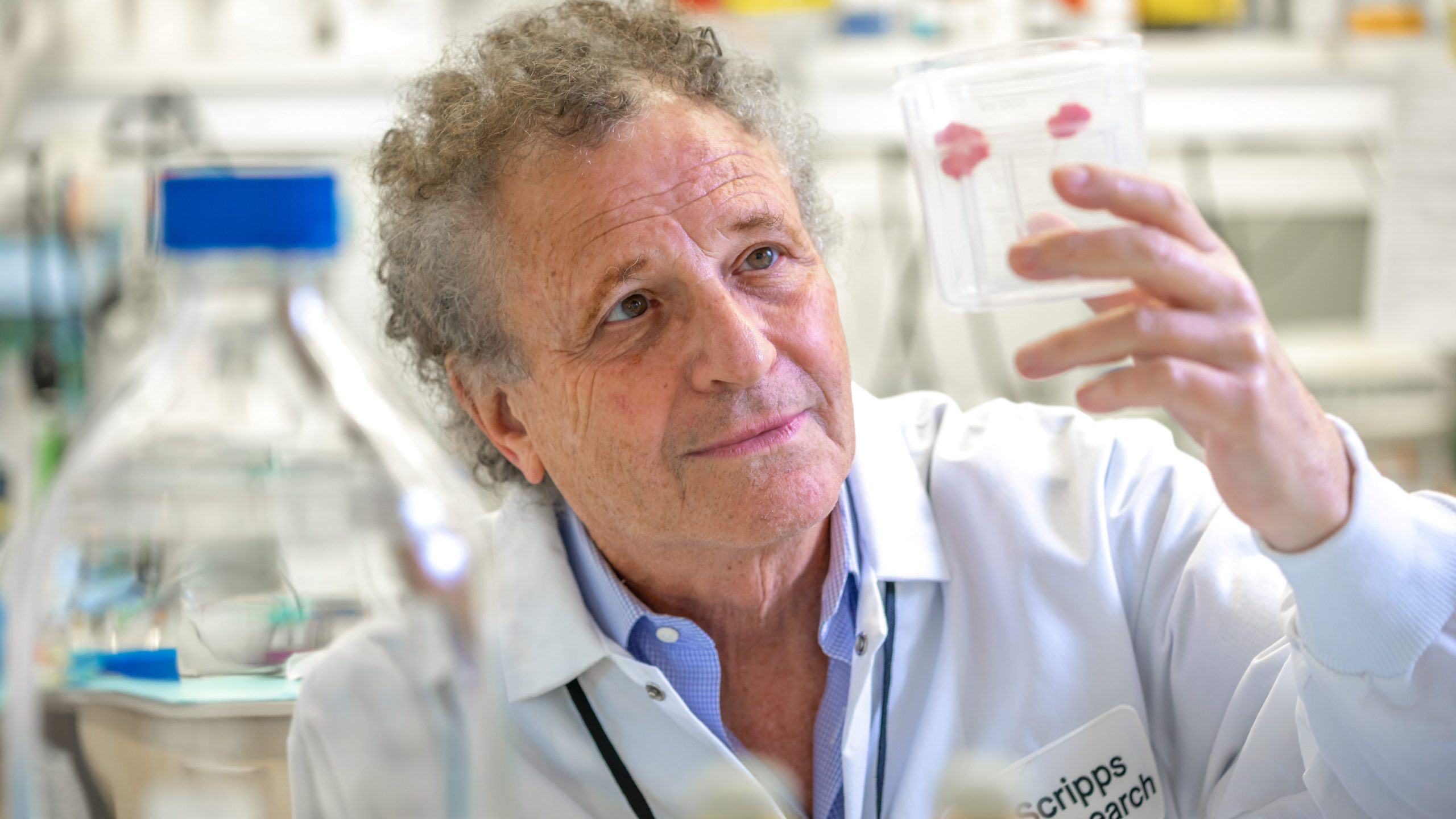
Lipton has spent many years exploring how neurons become susceptible to overstimulation. Imbalances appear in both ASD and in other brain diseases, including Alzheimer’s.
In stem cell and mouse studies, Lipton’s team has shown that improvements to the FDA-approved Alzheimer’s drug his team previously developed, memantine (Namenda®), can be made to help balance electrical activity in animal brain models and in stem cell models with ASD-related conditions such as MEF2C haploinsufficiency syndrome, Rett syndrome and tuberous sclerosis complex. The lead drug candidate in this new series of compounds, termed NitroSynapsin, was recently licensed to a small biotech company in the Boston area named EuMentis Therapeutics, Inc., which is leading NitroSynapsin’s clinical development for autism patients, and planning future clinical trials.
Mouse models of MEF2C haploinsufficiency show behavioral changes very similar to humans, as well as changes to the function of genes associated with neurogenesis, synapse formation and neuron death, Lipton’s group found. A key feature is an increased ratio of excitatory to inhibitory neurotransmission. NitroSynapsin has been shown to normalize them in cell and animal studies, Lipton says. Their work was published in the journal Nature Communications. Patient families have formed a group called the MEF2C Association, and are developing a patient registry with Lipton’s assistance, so they can stay abreast of future clinical trials.
Higher Rates in Males
Neuroscience professor Baoji Xu, PhD, collaborates with Page on another direction in autism research, understanding the role of microglial cells in autism.
Xu notes that autism research typically focuses on neurons, the brain cells that form branches and synapses, and send and receive signals, changing over time with learning and development. Microglia act as the brain’s caretakers, cleaning debris and responding to injury and infection with immune factors. They sense where they’re needed, then travel there.
Xu recently published a study in Nature Communications that identified a pathway that impaired microglial development and led to autism behaviors in male mice.
Shortly after their birth, mice with mutant forms of eIF4E show microglia with too much protein synthesis. Their cells show a reduced ability to move about, and shape neurons’ synapses—but only the male mice. They also have excess synapse density. They have other abnormalities, such as excess excitation, as well, Xu says.
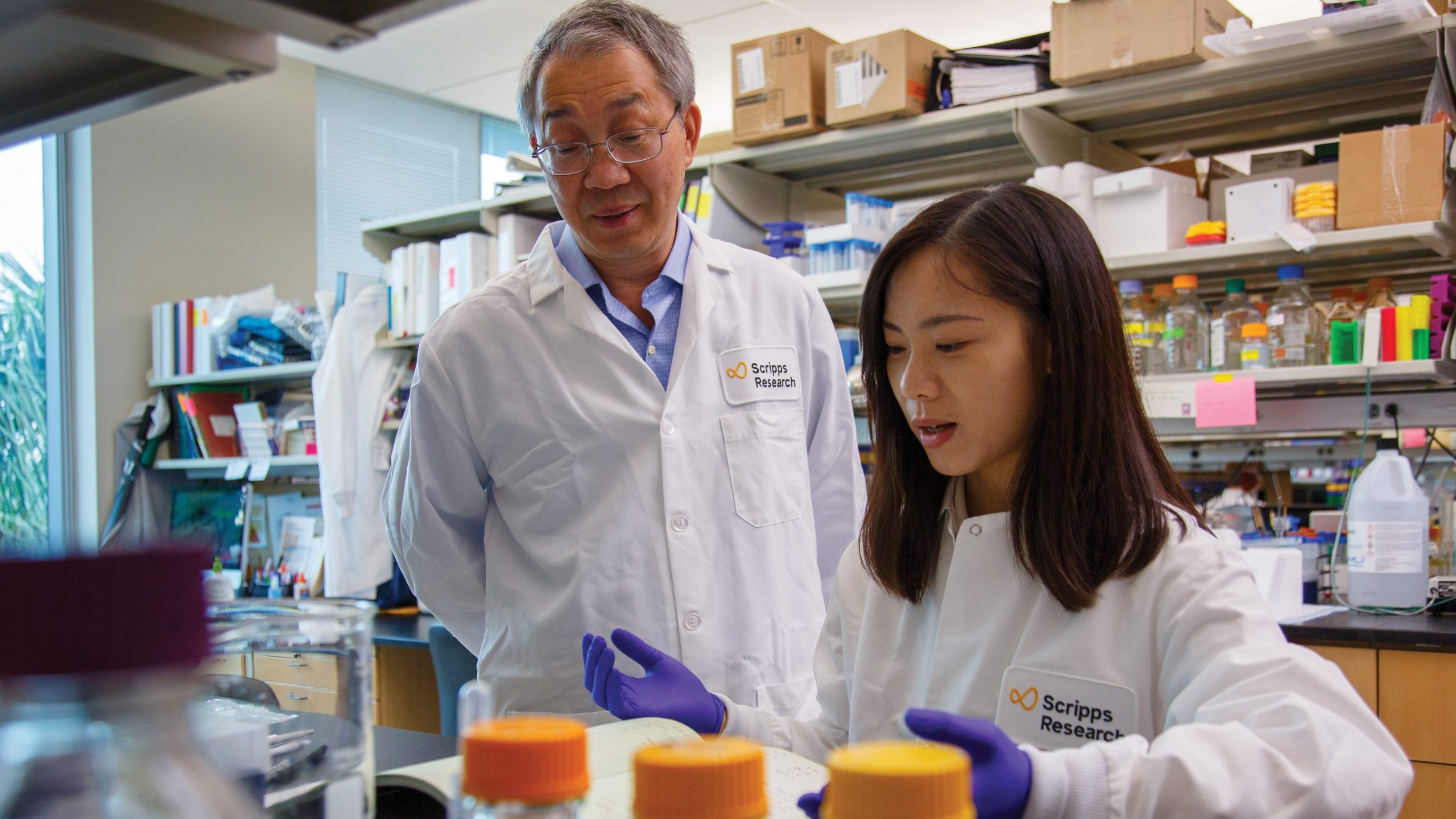
The idea that genetic variants in microglia could drive autism is a new one. It raises many new questions, especially what’s protecting the female mice from the abnormal microglia development.
“This might help explain why we see autism rates that are much higher in males,” Xu says. “We propose that functional disturbance of male microglia is an important cause for gender-biased autism spectrum disorders.”
His team in Jupiter, Florida, is working now to better understand the reason for different manifestation in males versus females. There may be factors on the X chromosome that are protective. It’s important to understand what those are, he says.
Meanwhile, Scripps Research has added a new faculty member, neuroscientist Xin Jin, PhD, who has also made strides in understanding the role of autism risk genes in brain development. Jin has helped develop ways to edit into mouse models various autism-associated risk genes, and then document the genes’ effect on multiple brain cell types, not just neurons. She calls her method in vivo Perturb-seq, as it first involves perturbing the genes in utero, then sequencing the transcriptome of specific cell types affected.
Autism’s causes are many. Its treatment options will be as well, predict Scripps Research neuroscientists in the forefront of this field.
Like Xu, Jin is finding that neurons aren’t the only brain cell types affected by these genetic mutations. Like Page and Lipton, she’s seeing that a mutation in one gene may impact a wider network, or module, of gene expression patterns in certain cells. In this way, she is creating detailed maps of autism risk genes’ functional effects and relationships, and providing new routes for targeting potential therapies—something that the entire research field needs.
“We are connecting genomic technologies with rigorous mechanistic dissection of how these complex inputs are integrated into the brain or misinterpreted in the disease contexts,” Jin says.
Though the scientists feel the research is progressing quickly, it can feel painstakingly slow to anyone with a loved one on the spectrum, the scientists acknowledge.
Page says he’s often asked by families what they can do for their children diagnosed with autism. He suggests asking their doctor for a genetic testing as a first step, even though genetically targeted autism treatments aren’t yet available.
“It helps with understanding of what’s going on, it allows them to connect and find support, and also to be aware if clinical trials begin,” Page says.
Working with connected families enabled Rumbaugh to support assembly of the first SYNGAP1 patient registry. This has been a tremendously valuable research tool, Rumbaugh says.
“These massive databases, with thousands of patients sequenced, along with their family members and siblings,” Rumbaugh says, “are creating a revolution in the understanding of autism genomics.”